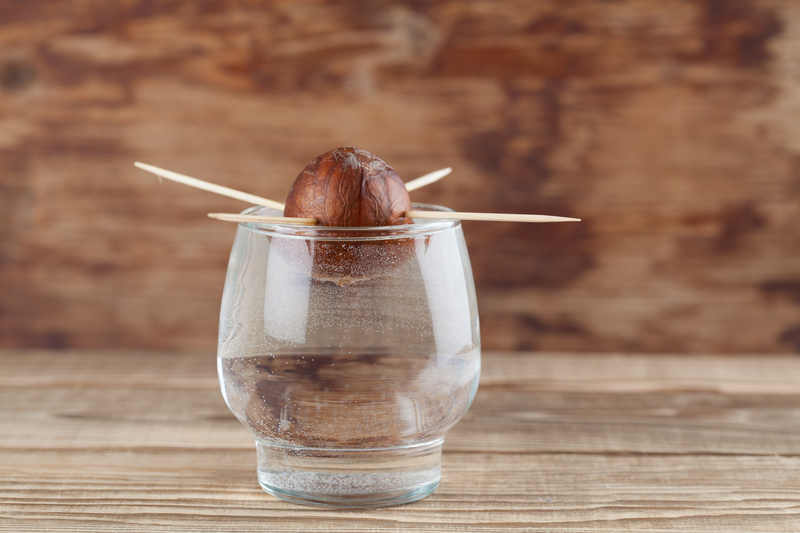Garden Tool Essentials for Hobbyists and Pros
Posted on 26/06/2025
Garden Tool Essentials for Hobbyists and Pros
Whether you're a weekend gardener or a seasoned landscaping professional, having the right garden tool essentials can transform every outdoor project from struggle to satisfaction. From basic spades to high-tech pruners, understanding which gardening tools are truly necessary--and how to select the best--will help you cultivate a lush, healthy garden with ease. This comprehensive guide explores must-have gardening tools for hobbyists and professionals, featuring expert tips, in-depth reviews, and practical usage ideas.
Why Choosing the Right Garden Tools Matters
Selecting top-notch garden equipment essentials is about more than convenience; it's about efficiency, plant health, and your personal enjoyment. The right gear ensures:
- Improved Precision: Proper tools prevent accidental damage and guarantee cleaner cuts and neater gardens.
- Increased Safety: Ergonomic and well-maintained garden implements reduce the risk of injury.
- Time Savings: Quality helps you finish tasks quickly and more effectively.
- Long-Term Durability: The best gardening tools last for years, saving money and reducing waste.

Must-Have Hand Tools for Every Gardener
Regardless of experience or garden size, these basic gardening tools remain indispensable. Every toolkit should begin with the following:
Trowel
A sturdy, sharp garden trowel tackles planting, transplanting, digging, and even some weeding. Look for trowels with sturdy, one-piece construction and comfortable, non-slip grips to minimize hand fatigue.
Hand Pruners (Secateurs)
Bypass or anvil pruners are essential for trimming stems, deadheading flowers, and light pruning. Professionals and hobby gardeners both benefit from high-quality pruners, with replaceable blades and ergonomic handles. Keeping blades sharp ensures clean cuts, which helps plants heal faster.
Garden Fork
A garden fork is vital for breaking up soil, aerating beds, and turning compost. Stainless steel tines offer durability and rust resistance, while D-shaped handles provide better leverage.
Weeder
No gardener escapes weeds! A specialized hand weeder targets roots of dandelions and other tough invaders, limiting regrowth. Models with long, slender shafts are best for tight spots, while ergonomic grips protect your wrist.
Hand Rake
A compact hand rake is perfect for gathering leaves, smoothing soil, or removing small stones from garden beds. Look for flexible, springy tines and light yet sturdy handles.
Key Larger Tools for Garden Enthusiasts and Professionals
As your gardening ambitions expand, so too should your toolkit. Advanced gardening tools bring power and precision to larger tasks. Consider these essentials:
Garden Spade and Shovel
Both shovels and spades are workhorses in any garden shed. Use a spade's straight, flat edge to slice soil, edge beds, or transplant shrubs. A shovel's curved blade moves and tosses soil and compost with ease. Choose stainless or carbon steel blades and make sure handles are securely attached.
Digging Fork
Heavier and broader than hand forks, a full-size digging fork lets you aerate, turn soil, and harvest root crops like potatoes and carrots without damaging them.
Long-Handled Hoe
Essential for weed control in larger beds, garden hoes come in varieties like stirrup, draw, and scuffle. Hoes allow you to stand upright for back-saving weed removal and soil shaping.
Rake (Bow or Leaf)
A full-size garden rake smooths beds and levels soil before planting, while a leaf rake gathers leaves and debris. Handle length should match your height for comfort.
Watering Can and Hose
Adequate watering equipment is vital. Choose a sturdy can with a detachable rose for gentle showers. A hose with adjustable nozzles ensures you reach all parts of the garden and adjust water flow as needed.
Wheelbarrow or Garden Cart
Moving soil, mulch, plants, or debris becomes vastly easier with a wheelbarrow or garden cart. Look for lightweight yet durable models; two-wheeled designs offer added stability.
Essential Power Tools for the Ambitious Gardener
When your garden projects outgrow hand tools, or you face stubborn terrain, power garden tools save time and effort. These are especially popular among advanced hobbyists and professional landscapers.
- Lawnmower: Electric, gas, or battery-powered choices keep lawns neat and healthy. Consider your lawn's size, terrain, and eco-impact when choosing a model.
- String Trimmer (Weed Whacker): Great for edging and clearing grassy patches unreachable by lawnmowers.
- Hedge Trimmer: Battery or electric models shape hedges and large shrubs quickly and accurately.
- Tiller or Cultivator: For larger plots, these motorized garden tools break up soil and mix in amendments, saving backbreaking labor.
- Leaf Blower: Quickly clears leaves, grass clippings, and debris from lawns and paths.
Choosing Between Battery, Corded, and Gas-Powered Tools
The best gardening equipment for your needs may depend on garden size and your preferences:
- Battery-Powered: Quiet, eco-friendly, and portable--ideal for most home gardens. Limited by battery runtime.
- Corded: Reliable power but range limited by cord length. Great for smaller yards with access to outlets.
- Gas-Powered: Maximum power and runtime; preferred by professionals but noisier and require more maintenance.
Specialized Garden Tools for Advanced Tasks
For professionals or passionate hobbyists, specialized advanced gardening tools help streamline heavy, repetitive, or delicate jobs. Consider adding these to your arsenal as your projects evolve:
- Pruning Saw: For thicker branches unreachable by hand pruners.
- Sickle or Hori Hori Knife: Ideal for cutting grasses, dividing perennials, or digging planting holes.
- Soil Testing Kit: Essential for understanding and correcting soil pH and nutrient levels.
- Bulb Planter: Makes planting bulbs and annuals quick and uniform.
- Grafting Knife: For budding or propagating fruit trees.
- Tree Loppers: Long-handled pruners for thick branches in high or low locations.
- Garden Kneeler/Pad: Cushions knees during long planting or weeding sessions.
Ergonomics: Comfort and Safety in Gardening
Comfortable and safe use is crucial, especially for those with mobility challenges or arthritis. Seek out ergonomic features such as:
- Soft, contoured handles to reduce hand strain.
- Lightweight structures for easier handling.
- Textured grips that prevent slipping, even with wet hands.
- Easy-to-operate locking mechanisms for pruners and loppers.
- Long-handled tools to maintain good posture and reduce back fatigue.
Remember to wear garden gloves, protective eyewear, and proper footwear for added safety and comfort.
Maintaining Your Essential Garden Tools for Longevity
Even the best garden tool essentials need care. Proper maintenance ensures tools persist through many seasons of use. Here are the key steps:
- Clean After Use: Remove dirt, sap, and debris to prevent rust and wear.
- Sharpen Blades: Keep pruners, saws, and hoes sharp for safe, clean cuts. Use a sharpening stone or file.
- Oil Moving Parts: Apply a light machine oil to hinges, blades, and screws to prevent sticking and corrosion.
- Store Properly: Hang tools indoors or under cover to avoid rust. Use tool racks or sturdy bins for organization.
How to Choose the Best Garden Tools for Your Needs
With so many garden equipment essentials on the market, focus on these criteria:
- Quality Over Quantity: Invest in fewer, higher-quality items made from stainless steel, hardwood, or durable composites.
- Fit for Purpose: Ensure your tools match your garden size and specific tasks--don't buy oversized gear for tiny flowerbeds!
- Test for Comfort: If possible, handle tools before purchase and evaluate weight, balance, and grip.
- Read Reviews: Seek recommendations from reputable garden forums, blogs, and experienced gardeners.
- Consider Sustainability: Look for tools manufactured with eco-friendly materials and practices.

Pro Tips: Organizing and Storing Your Garden Tools
Staying organized keeps your gardening tool collection accessible and in top shape. Try these tips:
- Install pegboards or wall hooks for easy hanging.
- Use labeled bins for small tools and accessories.
- Add a magnetic strip for pruners and knives.
- Designate separate storage for harmful chemicals and fertilizers.
- Regularly inspect and declutter your shed to keep only essentials.
Conclusion: Build Your Ideal Garden Tool Kit
As both a hobby and profession, gardening becomes far more productive, safe, and enjoyable with the right set of garden tool essentials. Whether you're nurturing a balcony's worth of pots, caring for expansive perennial beds, or tackling professional landscaping, start with core hand tools, invest in quality, add labor-saving power equipment as needed, and always put comfort and safety first.
By choosing and maintaining the right gardening tools, you'll set yourself up for many seasons of blooming success. Happy gardening!

